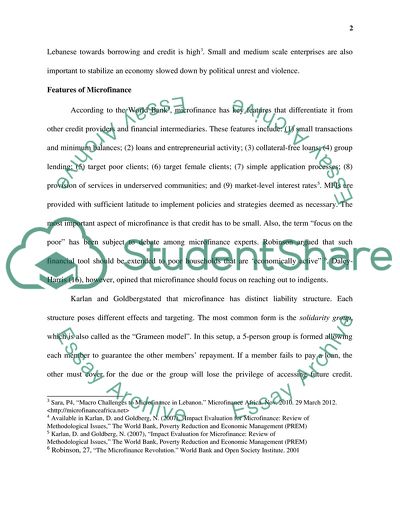Cite this document
(Microfinance of Lebanon Research Paper Example | Topics and Well Written Essays - 5000 words, n.d.)
Microfinance of Lebanon Research Paper Example | Topics and Well Written Essays - 5000 words. Retrieved from https://studentshare.org/macro-microeconomics/1770415-microfinance-but-im-a-law-student-doing-my-masters-in-banking-and-financial-law
Microfinance of Lebanon Research Paper Example | Topics and Well Written Essays - 5000 words. Retrieved from https://studentshare.org/macro-microeconomics/1770415-microfinance-but-im-a-law-student-doing-my-masters-in-banking-and-financial-law
(Microfinance of Lebanon Research Paper Example | Topics and Well Written Essays - 5000 Words)
Microfinance of Lebanon Research Paper Example | Topics and Well Written Essays - 5000 Words. https://studentshare.org/macro-microeconomics/1770415-microfinance-but-im-a-law-student-doing-my-masters-in-banking-and-financial-law.
Microfinance of Lebanon Research Paper Example | Topics and Well Written Essays - 5000 Words. https://studentshare.org/macro-microeconomics/1770415-microfinance-but-im-a-law-student-doing-my-masters-in-banking-and-financial-law.
“Microfinance of Lebanon Research Paper Example | Topics and Well Written Essays - 5000 Words”, n.d. https://studentshare.org/macro-microeconomics/1770415-microfinance-but-im-a-law-student-doing-my-masters-in-banking-and-financial-law.


